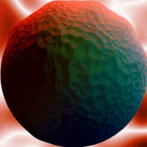Dartmouth College, ©1999
Last updated 05/17/99
Website Version 2.0, see hits
Email Webmaster
Instructor: Eugene Demidenko, Ph.D.
[ When ] - [ Where ] - [ First class ] - [ Text ] - [ Computer ] - [ Homework ] - [ Examinations ] - [ Team Project ] - [ Grades ] - [ Tutorial and assistance ] - [ Contact me ] - [ More info ] - [ Students with disabilities ] - [ Topics ]

3D Partial Differential Equation
©1999 sergeycentral
| When: 8:45 - 9:50 MWF with x-hour 9:00-9:50 Thursday. | |
| Where: 103 Bradley. | |
| First class: Monday, March 29, 8:45 - 9:50. | |
| Text: Stanely F. Farlow (1993). Partial Differential Equations for Scientists and Engineers. Dover, NY. | |
| Computer will be used throughout the course. These days, work in engineering and sciences is unthinkable of computer and programming. Computer is your laboratory! We will use TrueBasic as the programming language from the very first class, it free for Dartmouth students. I will teach you basic operators so that you will be able to use it in homework and team project. | |
| Homework will be assigned weekly due next Wednesday. I strongly recommend to pay special attention to homework. It is impossible to get a good final grade without hard work during the course. | |
| Examinations: There will be two exams which cover Part I and Part II. Part III will be covered by team project. The exams will be held after we finish the topic. | |
| Team Project will cover Numerical Methods (Part III) where you will apply what your learn during the course. The team will consist of two people (each member receives the same amount of points). | |
| Grades: The final grade will be based on the following
four achievements: - Homework: 25% - Exam I: 25% - Exam II: 25% - Team Project: 25% |
|
| Tutorial and assistance: I promise to provide any assistance or help for students who want it. Please, call me to set up an appointment or stop by my office. Usually, I can talk right after the class. | |
| Contact me: The best way to contact me is via e-mail. Also, you can call me at: 650-8220 -- my office at the Hospital (Lebanon, Cancer Center, Floor 4, Suite 8). 646-2430 -- my office in Hanover, 305 Bradley. |
|
| More info: You can find additional information at my Math50 website. | |
| Students with disabilities: I
encourage students with disabilities, including "invisible" disabilities like
chronic diseases, learning disabilities, and psychiatric disabilities to discuss with me
appropriate accommodations that might be helpful to them. . |
HOMEWORK:
1. PS or PDF
2. PS or PDF
3. PS or PDF
4. PS or
PDF
5. PS or PDF
TOPICS:

Part I. Linear spaces and operators
TOPICS
Part I. Linear
spaces and operators: We shall start with vectors, curves, and linear
transformations on the plane. Then we move on to three-dimensional space and Euclidean
space. Finally we shall arrive at infinite dimensional spaces such as Hilbert space and
functional space with different examples of linear operators and scalar products. The idea
of orthogonal decomposition over our journey through the space will be emphasized. The
concept of decomposition will lead us to Fourier and spectral analyses, two of the major
techniques in sciences and engineering. Besides, the following concepts and methods will
be studied: elements of matrix algebra and linear operators in Euclidean space, eigenvalue
and eigenvector, best fit in linear space, elements of optimization of multivariate
function, constrained optimization and Lagrange multipliers, vector fields, divergence and
curl vectors. |
Part II. Partial
differential equations: Partial Differential Equations (PDEs) are the
major tool for modeling space-dynamic processes in physics and engineering. During the
course we shall learn where PDEs come from and how to solve them. Two major types of PDEs
will be considered: diffusion (heat) and hyperbolic (wave). We shall start with
diffusion-type problem (heat-flow equation) under different boundary conditions. Several
methods to solve PDEs will be discussed: separation of variables, Fourier and Laplace
transform, D'Alembert solution, among them. The idea of linear operators and particularly
Fourier series from Part I will be employed. We shall start with the simplest version of
the wave equation and then consider possible generalizations. Again, the connection to
linear spaces and operators and particularly function eigenvalue will be discovered. Also,
we shall discuss other types of PDEs (PDEs classification) and major methods to solve
them. At last, I will introduce calculus of variation as the functional optimization
problem and its connection to PDE. |
|
| Part III. Numerical methods: Sooner
or later any application of mathematics to sciences and engineering will lead to
computation. We will discuss two major numerical techniques: Monte Carlo simulation for
integral evaluation and numerical solutions to PDEs. Different types of finite-difference
method will be considered. Pitfalls of discretization and comparison to analytical
solution will be discussed. This part will involve computer computations and TrueBasic
programming; some topics will be covered by our team projects. . |
I Recommend:
![]()
It is best if you use
Internet
Explorer 4+
on this website
